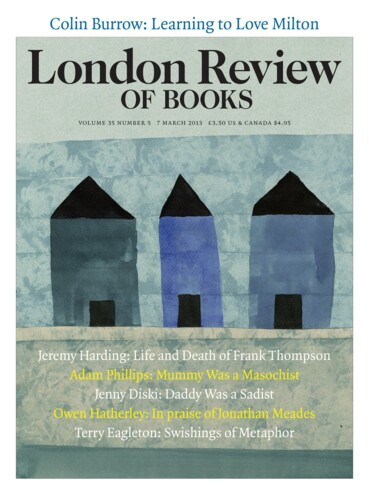With 760 members, the House of Lords is the second largest legislature in the world behind the National People’s Congress of China. If you ignore lower chambers and compare it only to other upper chambers, it is the largest by far: France’s Senate, its closest rival, has 348 members, Italy’s has 315 and Egypt’s 264. And the government is due to appoint a new batch of life peers very soon.
When they see the heaving bar and terrace, some members must feel that the exclusivity of the club has been compromised. But among the swarming mass of retired politicians and special interest groups, there remains a cohort of aristocrats determined to preserve the best traditions of the upper chamber. Many people believe, mistakenly, that hereditary peers were removed from the House in 1999, when New Labour first took a reforming broom to the place. But in fact, a deal struck between the Labour front bench and the then Viscount Cranborne, now Marquess of Salisbury, Robert Gascoyne-Cecil, allowed 92 of the 759 ‘hereditaries’ to remain, on the understanding that they wouldn’t thwart the passage of legislation by their confrères. This arrangement, it was agreed, would remain until ‘stage two’ of the reforms. The Gascoyne-Cecils were saved and the hereditary peers kept a toehold in the chamber. ‘Stage two’ never happened.
How were the 92 to be chosen? Had the noble lords decided to stay true to the hereditary principle, they might have injected an element of chance into the process, perhaps a lottery or drawing of straws. But curiously, this was not deemed a proper basis for the selection of legislators: the peers decided instead that the survivors should be elected by their fellow hereditaries. What followed was a kind of aristocratic beauty pageant, for which each peer had to write a 75-word statement justifying their existence. Some appealed to the historical significance of their great estates, others to the skills and experience they could bring to the house. Earl Grey concluded his manifesto with ‘GSOH’.
This wheeze was dreamed up 14 years ago. Fourteen years is a long time in politics, and a very long time for a hereditary peer of advancing years (though spare a thought for the heir, to whom it must seem even longer): one might expect there to have been a certain amount of ‘natural wastage’ over the years. But the number of hereditaries has remained steady thanks to a concession that allows the 92 to replace any one of their number in the event of their death. Since only blue blood would do, it was agreed that the new recruits should be drawn from the pool of hereditaries cast out in 1999. This topping up process has produced some of the most peculiar elections in the Western world: the candidates are aristocrats; the electors are aristocratic legislators; the electoral system is Alternative Vote.
There have been 17 of these contests since 1999. Each party caucus is responsible for the replenishment of its own ranks and only a handful of peers are elected by the whole house. The candidates’ mini-manifestos persist: ‘I have owned a hill farm in Cumbria for 34 years and understand the problems of hill farming’ (Earl of Carlisle, Lib Dem); ‘I run an equestrian/activity centre and am an international show-jumping judge’ (Lord Rowallan, Conservative); ‘My inspiration comes from the 7th Earl of Shaftesbury who dedicated his life to children and the underprivileged’ (the 12th Earl of Shaftesbury, crossbencher). Some names crop up on the ballot again and again: Baron Biddulph has stood in every Conservative by-election since 1999 without ever receiving a single vote; he has also stood in one Labour and two ‘whole-house’ by-elections. One of the most preposterous by-elections took place in 2003 after the death of the Labour peer, Lord Milner of Leeds. Only serving Labour hereditary peers were eligible to vote; all three of them. There were 11 candidates.
The most recent contest was held last month when the Conservative peer Earl Ferrers died. He was a popular figure in the Lords, whose most notable contribution might have been his unwitting acceptance of an amendment in 1988 that allowed pubs to open on Sunday lunchtimes (he forgot to shout ‘not content’). One of the early favourites to succeed Ferrers was Viscount Hailsham, né Douglas Hogg, who retired from the Commons at the last election, having received some adverse publicity for his moat-related expenses claims. Hogg failed to gain the necessary majority of the 47 Conservative peers. The victor was Viscount Ridley, better known to some as the popular science writer and climate change sceptic Matt Ridley. He deserves to be better known still for his chairmanship of Northern Rock in the period leading up to its implosion in 2007. A zoologist by training, he had followed in the footsteps of his father, who chaired the bank in the 1990s. The Treasury Select Committee’s report into the bank’s demise found that Ridley lacked ‘relevant financial qualifications’ and failed to provide against the risks of the ‘reckless business strategy’ pursued by the bank’s executives.
Ridley’s latest bestseller, a paean to the free market called The Rational Optimist, is described by its publishers as ‘a counterblast to the prevailing pessimism of our age’. It’s no wonder he feels chipper, but his charmed rise to a seat for life is unlikely to cheer the rest of us up.
Send Letters To:
The Editor
London Review of Books,
28 Little Russell Street
London, WC1A 2HN
letters@lrb.co.uk
Please include name, address, and a telephone number.

